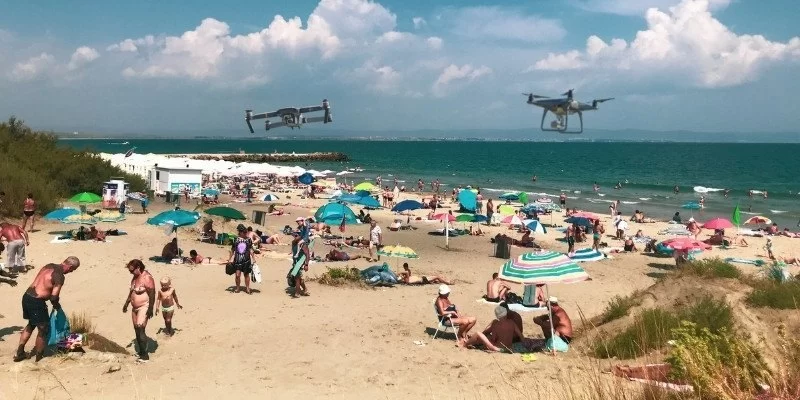
1. Planning Like a Pro for Legal Beach Flights
1.1 Why planning matters for coastal shoots
The ocean is gorgeous and chaotic. Regulations shift by location, winds whip up quickly, and crowds ebb and flow with the tide. To truly nail How to Get Great Drone Footage of US Beaches Legally, treat beach filming like a mini-expedition: check rules first, then design creative moves around those limits.
1.2 A quick roadmap before you pack
Decide your purpose (recreational fun or commercial/Part 107), pick a specific beach, verify land manager rules, check airspace, and time your shoot for soft light and low crowds. Create a shot list that won’t tempt you into risky flights—wide reveals, parallax passes along the surf line, and gentle orbits at legal altitudes.
2. Understand Where You Can and Can’t Fly on US Beaches
2.1 Federal baseline: recreational vs. Part 107
In the U.S., most casual trips to the shore count as recreational flying; commercial work requires a Part 107 certificate. Either way, you must respect airspace and local restrictions. Use this section to align your plan with the correct rule set—then your footage, not worries, fills the day.
2.2 National Park beaches are special
Some of America’s most famous beaches sit inside National Parks and seashores. Those locations often prohibit launching and landing drones from park property. Always check the specific park’s policy and boundary lines before you go, and plan nearby alternatives where flying is allowed.
2.3 State and city beach nuances
State parks and city beaches can allow drones broadly, restrict them seasonally, or require permits in wildlife areas. Expect posted orders at certain beaches (nesting birds, fire danger, or heavy traffic). If signs or park webpages mention limits, treat them as your rule of the road.
3. Airspace Made Easy—LAANC, B4UFLY, and Smart Authorizations
3.1 LAANC in beach towns
Many coastal cities sit under controlled airspace near airports or heliports. If so, request near-instant digital authorization through LAANC before you fly. Keep your max altitude within the grid’s published ceilings and save the approval in case an officer or ranger asks.
3.2 B4UFLY for fast “can I fly here?” checks
Use a trusted “can I fly” map to scan for controlled airspace, TFRs, or sensitive areas. It’s the quickest way to avoid surprises when you’re standing in warm sand with a charged battery and perfect clouds.
3.3 Timing your flight window
Even when authorized, give yourself margin—winds pick up by late morning, and coastal inversion can drop visibility. If crowds grow, adjust your shot list to avoid people and moving vehicles below.
4. People, Privacy, and Moving Vehicles: What the Rules Really Mean
4.1 Operations over people: the practical translation
On busy beaches, you need to understand what’s allowed above people who are not part of your operation. Modern rules categorize operations and aircraft requirements; if you can’t meet them, design flight paths that keep your drone clear of crowds and fly during off-peak hours.
4.2 Moving vehicles on beach roads
Some boardwalks or beach roads have steady traffic. Avoid flying directly over moving vehicles unless your operation and aircraft meet the specific allowances; otherwise, shift your angle and use lateral tracking shots from a safe offset.
4.3 Privacy, courtesy, and consent
Beaches feel public, but people still expect privacy in certain contexts. Film wide, avoid lingering over sunbathers, and get consent for identifiable close-ups—especially if you plan to publish or sell the footage. A friendly heads-up goes a long way toward good vibes and fewer complaints.
5. Field-Tested Stories from Three Classic US Beach Shoots
5.1 Dawn glass in the Outer Banks, North Carolina
At nautical blue hour, the Atlantic turns to liquid chrome. We staged from a quiet public access far from hotels, scanned airspace, and launched for a single continuous move: a low-and-slow shoreline follow that rose into a reveal of the pier as the first surfers paddled out. Because the beach was nearly empty, we kept generous lateral distance and never overflew people—yet the sequence feels intimate and alive.
5.2 Tide lines and sea lions on a California State Beach
Midweek, shoulder season. We checked the specific state beach page for posted orders, then used LAANC for a 200-foot ceiling under a nearby coastal airport grid. The hero shot was a diagonal parallax along tide pools, staying clear of roped-off wildlife areas. The result: sparkling texture, zero drama, and footage our editor called “postcard-ready.”
5.3 Emerald water on Florida’s Panhandle
We arrived before umbrellas dotted the sand. A quick “hello” to early walkers built goodwill; we offered to avoid their area during climbs. With winds forecast to gust by noon, we flew lightweight arcs and gentle orbits at first light, then packed up as parasail boats appeared on the horizon. Sunset would have been beautiful—but the morning gave us legal space and softer air.
6. Cinematic Checklist to Make Coastlines Look Epic
6.1 Framing and flight paths
Think in textures: foam, footprints, boardwalk geometry. Start with a shoreline “leading-line” follow, add a pier reveal, then a dune-to-ocean push. Keep your horizon true and your subject off-center for flow.
6.2 Color and light
Shoot during golden or blue hour, set a gentle contrast profile, and bracket exposures when the sun hits water. A circular polarizer can deepen water tones and cut glare—if your gimbal can balance it.
6.3 Motion discipline
Small sticks, big payoffs: keep yaw slow, avoid abrupt altitude swings, and let waves provide the motion. Record longer takes than you think you need; editors love an extra five seconds of clean tail.
7. Permits, Local Nuances, and Professional Touches
7.1 When permits often appear
Expect permits for large productions, sensitive wildlife zones, or when your takeoff/landing area is managed land with specific regulations. City ordinances can also require local registration or operating permits—especially in dense boardwalk towns.
7.2 Reading a park page the right way
Scan for “posted orders,” “wildlife closures,” and “commercial filming” sections. If you don’t see a clear answer, call the district office and note the staffer’s name and guidance in your shoot plan.
7.3 Pro touches clients notice
Carry printed authorizations, wear a high-visibility vest at launch, and mark off a tiny takeoff zone with cones so bystanders give you space. It looks professional and keeps your focus on the screen.
8. Troubleshooting: Wind, Gulls, Salt, and Where to Stand
8.1 Wind
Coastal wind escalates fast. Keep a margin between wind speed and your drone’s max capability, fly out into the wind (so you return with a tailwind), and land early if gusts get spiky.
8.2 Birds
Gulls and terns can be curious or territorial. Avoid rookeries, give wildlife a wide berth, and climb slowly if birds investigate—then exit the area.
8.3 Salt and sand
Use a landing pad, wipe the aircraft after each battery, and store gear sealed. Salt mist can corrode quickly; fresh-water rinse for props if they get sticky.
9. Pack Like a Filmmaker, Not a Tourist
9.1 Essentials
Spare props, ND set, landing pad, lens cloths, polarizer, long USB cable, thin cones or markers, and a compact windsock. Add a printed copy of your authorization if applicable.
9.2 Safety extras
Micro first-aid, high-viz vest, small flashlight for pre-sunrise checks, and a sealable dry bag for batteries. Bring snacks; good light waits for no one.
10. Turn Inspiration into Action with Refined Travel
10.1 Where to go next
Now that you know How to Get Great Drone Footage of US Beaches Legally, pick a coastline that fits your style—quiet dunes, pier towns, or emerald shallows—and plan a sunrise session that respects local rules while delivering cinematic magic.
10.2 Plan with confidence
For curated beach itineraries, sunrise-friendly lodging, and location briefs that help you fly legally and creatively, explore [Refined Travel ]. Our specialists highlight drone-friendly angles, seasonal wildlife notes, and low-crowd windows so your first take is the keeper.
10.3 Ready when you are
Want a coast-to-coast beach film run with backup locations if winds spike? Check availability through [Refined Travel ] and lock in a trip that turns inspiration into footage you’ll be proud to publish.







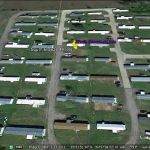 Cherokee County Mobile Home rentals LLC1.0 (1 reviews)
Cherokee County Mobile Home rentals LLC1.0 (1 reviews) Deer Lake Campground4.0 (33 reviews)
Deer Lake Campground4.0 (33 reviews) Newark RV Park, Texas4.0 (63 reviews)
Newark RV Park, Texas4.0 (63 reviews)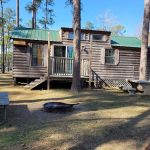 Chehaw Campground4.0 (93 reviews)
Chehaw Campground4.0 (93 reviews) Pioneer Campsite #34.0 (12 reviews)
Pioneer Campsite #34.0 (12 reviews)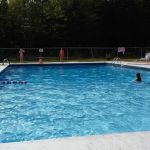 Bonny Rigg Camping Club Inc4.0 (69 reviews)
Bonny Rigg Camping Club Inc4.0 (69 reviews) Exclusive Travel Packages for First-Class Travelers: A Guide to Luxury Vacations
Exclusive Travel Packages for First-Class Travelers: A Guide to Luxury Vacations Refined Travel Experiences in Southeast Asia: Explore Luxury & Unique Destinations
Refined Travel Experiences in Southeast Asia: Explore Luxury & Unique Destinations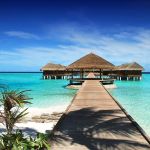 How to Make the Most of Luxury Vacation Deals: Expert Tips for Savvy Travelers
How to Make the Most of Luxury Vacation Deals: Expert Tips for Savvy Travelers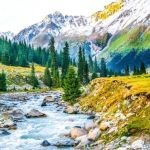 How to Enjoy a Refined Travel Experience in the Mountains
How to Enjoy a Refined Travel Experience in the Mountains Refined Travel Itineraries for Art and Culture Lovers: Explore the World of Art and History
Refined Travel Itineraries for Art and Culture Lovers: Explore the World of Art and History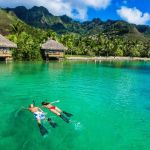 Most Luxurious Destinations for Honeymooners: Top Spots for Romance and Luxury
Most Luxurious Destinations for Honeymooners: Top Spots for Romance and Luxury